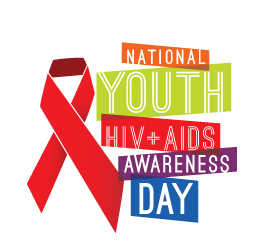 April 10 is National Youth HIV & AIDS Awareness Day. I’m blogging today to show support for this important initiative. According to aids.gov, “National Youth HIV & AIDS Awareness Day is an annual observance that takes place on April 10 to educate the public about the impact of HIV and AIDS on young people and to highlight the work young people are doing across the country to respond to the epidemic.”
April 10 is National Youth HIV & AIDS Awareness Day. I’m blogging today to show support for this important initiative. According to aids.gov, “National Youth HIV & AIDS Awareness Day is an annual observance that takes place on April 10 to educate the public about the impact of HIV and AIDS on young people and to highlight the work young people are doing across the country to respond to the epidemic.”
I’ve had the privilege of working with a number of programs on the cutting edge of services for and by young people living with, or at risk for, HIV/AIDS. In the 1990’s, a group of 10 youth-focused programs were funded as Special Projects of National Significance by the Health Resources and Services Administration HIV/AIDS Bureau. In my role as one of the investigators in a cross-cutting evaluation of that initiative, I learned about the innovative work by these programs and the way they helped to empower young people — especially at a time when today’s treatment options were not yet widely available. It’s rewarding to see that a number of the programs that we worked with are still thriving and continuing the work that was started all those years ago.
What did we learn about HIV/AIDS service models for youth?
Looking back, what are some of the things we learned that might inform HIV and AIDS services for young people today? One thing that stands out is the use of empowerment models that were used by many of these programs. We reflected this theme in our evaluation by using an empowerment evaluation approach, providing extensive training and technical assistance in program evaluation to the young adults who staffed these programs — a number of whom have since gone onto successful careers in public health and non-profit management. Of course, I’m certain I learned more from them than they did from my colleagues and me (aka those of us with “letters after our names”).
Our evaluation findings, as well as papers from each of the programs in the initiative, were published in a special issue of the Journal of Adolescent Health. As we stated then, “One of the most important factors in the model’s success is that youth and professionals share an equal partnership in all stages of program design, planning, and implementation.” We also pointed out that “active case management is crucial, not only to ensure that clients receive needed services, but also to ensure that the programs themselves run in a coordinated, tightly linked way. Given needs of adolescent clients and existing adult-oriented service networks, the use of active case management and the active participation of youth in the services system are critical.”



